The good news is that Major League Baseball and the MLB Players’ Association met twice this week on consecutive days. And that’s pretty much all the good news from the bargaining table we can cover at this time.
There were a handful of interesting developments, some of which were more promising than others. The two sides are moving closer to setting higher minimum salaries for pre-arbitration players. On Monday, the union withdrew its request to allow certain players to reach free agency before they accrue six years of service time. On Tuesday, the league dropped its previous proposal to use a formula to get more money to all players with between two and three years of service time. The union had rejected that offer because it would have curbed the arbitration system instead of expanded it; the PA wants to make more players arbitration eligible after two years.
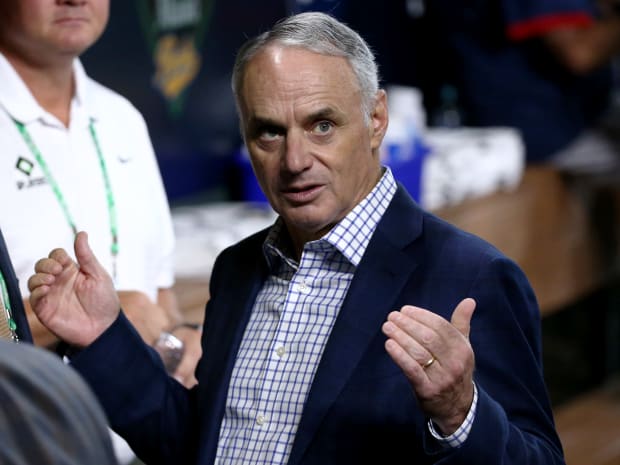
Troy Taormina/USA TODAY Sports
A different formula-based system to pay pre-arbitration players is what’s getting the most buzz. The league and the union both are reportedly in favor of a bonus pool that would award extra money to those players with between zero and three years of service based on performance. There’s a lot still to be ironed out with the bonus plan: the union wants the pool to include a total of $105 million to be divided among the worthy, while the owners’ most recent offer is $10 million. The funds for the bonus pool would come from “central revenue,” which is separate from the owners and is not paid by teams. Players who win awards—MVP, Cy Young, Rookie of the Year, etc.—would get a bonus, and in the latest proposal from the league, so would eligible players who finish within the top 30 in WAR.
It’s unclear which WAR formula, or combination of WAR formulas, the bonus pool would use. The owners reportedly would like to use FanGraphs WAR (fWAR), while the union has asked to take the average of fWAR and Baseball-Reference WAR (bWAR). Baseball Prospectus also calculates WAR, but at this point neither the players nor the owners have considered using its version.
Regardless of the version of WAR the sides agree upon, there are plenty of concerns about using any WAR metric to determine which players get what could be a multi-million-dollar bonus.
“Having that used to determine player compensation is an uncomfortable thing,” Craig Goldstein, the editor-in-chief of Baseball Prospectus, told me yesterday. “We’re doing the best we can, but I think anyone who hosts a metric like that will tell you there are issues with them. There are generalizations; there are weak spots. That’s part of the reason why there are multiple versions of these things. They take different philosophical approaches.”
For instance, one of the main differences between bWAR and fWAR is how they calculate the value of pitchers. fWAR is more theoretical in that it attempts to quantify a pitcher’s performance based on the things he can actually control. One of its main components is Fielding Independent Pitching (FIP), so it generally values strikeout pitchers more than those who pitch to contact. bWAR uses runs allowed in its formula. That doesn’t mean either one is better than the other. Rather, it means they both can be used to contextualize a pitcher's performance.
Another thing to consider is that baseball continues to evolve. Teams are shifting more frequently, starting pitchers are throwing fewer innings, and batters are making less contact and hitting more home runs. WAR has to keep up with the changing game.
“The pace of changes seems to be increasing rather than decreasing,” Sean Forman, founder of Baseball-Reference and president of Sports-Reference.com, told me. “There are a lot of things that go into it that we have to adjust a little bit on the fly. We do our best with that. We try to be transparent about it. Changes are going to happen.”
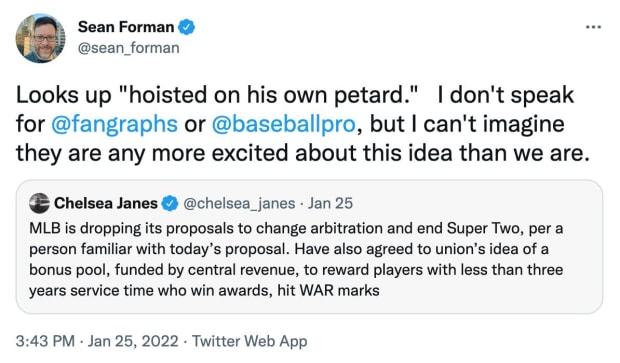
To explain why WAR is adjusted, Forman gave me an example from a few years ago. A Blue Jays third baseman (he couldn’t remember which one) ranked among the WAR leaders over the first half of the season because of his defensive metrics. The Blue Jays used a lot of shifts and the third baseman was making a lot of plays in short right field. Baseball-Reference uses data from Baseball Info Solutions to measure defense, and at the time, the system had no way to account for shifts.
“He was making these plays that when the system was set up showed up like he was some unbelievable fielder who was ranging all over the infield to pick up balls,” Forman said. “Obviously, that’s not what was happening. He was just positioned in different places.”
The quick fix was to exclude plays made by shifted fielders, so at the All-Star break, Baseball-Reference implemented the changes and the Blue Jays third baseman’s WAR regressed. However, the shift wasn’t going away, so they went back and figured out how to determine the fielding value of a shifted defender. Once that was implemented, WAR changed again.
Shohei Ohtani created an unprecedented conundrum for WAR, because what the heck do you do when a pitcher is also a full-time DH when he isn’t pitching? How can you properly measure the value of something that has never been done before? Baseball-Reference adjusted its WAR during the 2021 season to account for Ohtani.
All of this puts those who calculate WAR in a tough spot. The purpose of WAR Is to understand player value, not to determine which players deserve more money. What happens when WAR is updated in the offseason, and the order of the leaderboard changes? There’s a very real possibility that a player who was awarded a bonus could no longer be in the top 30.
“I don’t feel comfortable having millions of dollars being assigned to players based on these numbers,” Forman said. “It’s not intended to be the final word on player value and player assessment.”
Goldstein and I talked about this proposal in a more general sense. Neither of us are in favor of implementing a pay-for-performance system because we’re worried that in future CBAs, the league would find a way to expand it beyond bonuses and use it to suppress salaries. Look at what happened with the luxury tax threshold. It is not technically a salary cap because teams can exceed it, but many of them don’t because they don’t want to pay the tax.
This led us to wondering why the owners should have any say at all in how the bonus pool gets divided. They are not the ones paying it, because it comes from “central revenue.” One possible solution, as Jonathan Judge of Baseball Prospectus suggested on Twitter, is to make it the union’s problem to divide it up. Think of this as something akin to what teams do with their postseason shares. The players on each team decide how much of the bonus each person gets.
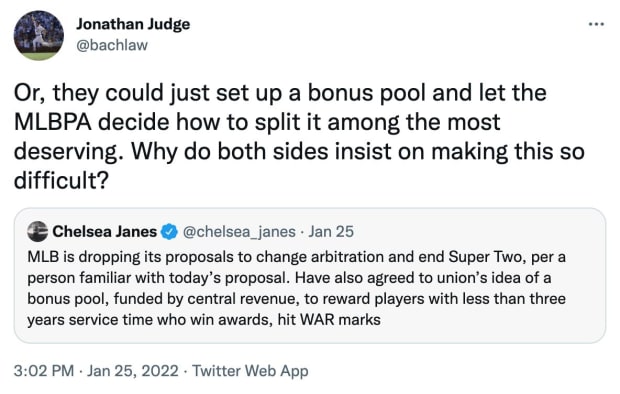
In the case of the bonus pool for pre-arbitration players, maybe WAR would be part of the criteria in determining who should be rewarded. Either way, how to divide up the pool isn’t something that should be collectively bargained over because once it’s established, it has nothing to do with the owners.
“In a lot of ways, there’s no impact on the owners as to who gets it. And yet they seem to want to have a say in it to some degree. I think that’s why they want a formula,” Goldstein said. “Why do they want a formula? Because they want to grow that usage. They want to replace arbitration with a formula.”
The bonus plan is just a sliver of what will be included in the next CBA. The two sides still have a long way to go. Both sides seem to realize that players need to get paid earlier in their careers, and it’s encouraging to see that they are coming up with different ways to drive more money to younger players. Hopefully, they will soon come up with a solution to settle their differences that does not involve a pay-for-performance system.
Because WAR is not going to fix it.
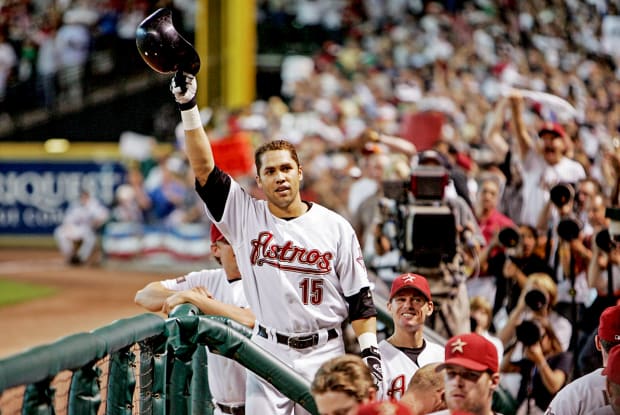
John Biever/Sports Illustrated
1. THE OPENER
“The last two seasons have seen their share of heckles and boos and skeptical looks for former Astros. But it will not be until later this year that the questions, the rest-of-your-life questions, will really begin to take shape—when Carlos Beltrán is on the ballot for the Hall of the Fame.”
That’s Emma Baccellieri in her column from yesterday on the new cheating question that will be coming to the Hall of Fame discourse when Beltrán makes his debut on the ballot later this year.
You can read Emma’s entire piece here.
2. ICYMI
We’ll be handling this section a bit differently this week. Instead of the typical rundown we do for ICYMI, SI’s Dan Gartland is here to go through some of the storylines from this week in baseball. If you like what you see from Dan, you should sign up for his SI Extra newsletter, which will be launching soon.
This week’s Hall of Fame announcement went just as expected. David Ortiz is going to Cooperstown. (The video of him getting the phone call from the Hall is fantastic.)
His case: Ortiz was one of five players Tom Verducci put on his ballot. Here’s why:
Among Hall of Famers, Ortiz will rank tied for fifth in extra-base hits (1,192), ninth in doubles (632), 10th in homers (541) and 17th in RBIs (1,768). He slashed .289/.404/.543 in 85 postseason games. By one measure, he was the most clutch hitter in postseason history. He is the postseason leader in win probability added (3.2). No need to get any deeper into the statistical weeds. That’s a Hall of Famer.
No defense, no problem: Ortiz is the third player elected to the Hall who spent a significant portion of his career as a designated hitter, joining Harold Baines and Edgar Martinez. Baines was the DH in 58% of his career games, and Martinez DH’d 68.2% of the time. Ortiz, meanwhile, hardly ever played the field. He was the DH in 84.2% of his games, but his prowess at the plate was too undeniable to leave him out of the Hall.
What about the other guys? Barry Bonds (66% of the vote), Roger Clemens (65.2%), Curt Schilling (58.6%), Sammy Sosa (18.5%) have officially fallen off the ballot after failing to reach the 75% threshold in 10 years. Bonds, Clemens and Sosa are three of the sport’s most notorious steroid users, which is why Verducci believes they don’t belong in the Hall. Many voters left Schilling off their ballots because he has amplified presidential-election conspiracy theories and defended the Jan. 6 insurrectionists, called for the lynching of journalists, supported anti-transgender legislation, among many other examples of his offensive behavior.
Who’s on deck? It’s never too early to start looking at next year’s Hall of Fame ballot.
Only three players who will be on the ballot next year garnered more than 50% of the vote this time around:
- Scott Rolen (63.2%)
- Todd Helton (52%)
- Billy Wagner (51%)
Any or all of those guys could end up getting the call in 2023. There’s also Carlos Beltrán, who will be making his debut on the ballot.
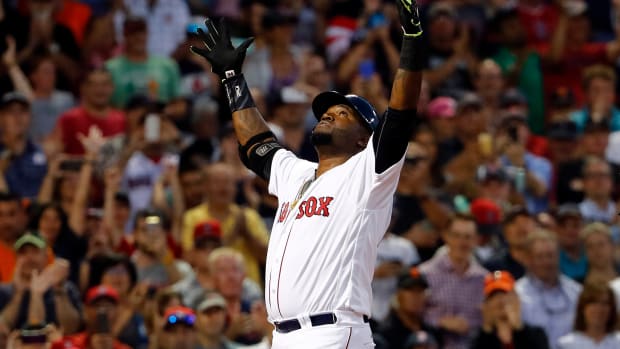
Winslow Townson/USA TODAY Sports
3. WORTH NOTING from Tom Verducci
Here are some interesting takeaways hidden in the Hall of Fame voting results announced Tuesday:
• More than one-third of the 394 voters voted for the maximum 10 players. The full-ballot crowd jumped from 15% last year to 34% this year.
• The average selections per ballot was 7.11, up from 5.89 last year.
• Sammy Sosa hit 609 home runs. Over a 10-year period he averaged 48 homers and 123 RBIs. But only 73 people voted for Sosa while 260 voted for Barry Bonds and 257 for Roger Clemens.
• If Manny Ramírez is the canary in the coal mine for Testing Era PED scofflaws, that’s bad news for Alex Rodriguez. Ramírez has been on six ballots. His support has barely moved: 24%, 22%, 23%, 28%, 28%, 29%. Rodriguez registered 34% on his first ballot.
• Scott Rolen is making the greatest ascent in balloting history: 10%, 17%, 35%, 53%, 63%. He is the candidate most likely to get elected next year, with Carlos Beltrán the best first-time candidate.
• Only six voters submitted a blank ballot, down from a record 14 last year.
• Before this ballot, and with the election in December of Gil Hodges (63.4% best showing on the writers ballot), the player with the most support from the writers without eventually getting into the Hall was Roger Maris (43.1%). But with their time on the ballot exhausted, the “record” belongs to Curt Schilling (71% last year), Bonds (66% this year), Clemens (65.2%).
• The screening committee for the Today’s Game Era Committee ballot has a difficult task. Only 10 names go on the ballot, with the vote held in December by a separate 16-person committee. Bruce Bochy, Jim Leyland, Lou Piniella (who missed by one vote last time), George Steinbrenner, Joe West, Gerry Davis, Fred McGriff, Mark McGwire, Rafael Palmeiro and Kenny Lofton all are eligible. Where does that leave Bonds, Clemens, Sosa and Schilling? Do they get another shot at the Hall so soon and crowd out the others, or should they wait for the next committee in 2024?
• Guesses for future ballot winners:
2023: Scott Rolen
2024: Adrián Beltré, Carlos Beltrán
2025: CC Sabathia, Ichiro Suzuki, Billy Wagner
2026: Joe Mauer, Todd Helton
2027: Buster Posey
4. TRIVIA! from Matt Martell
Before we get into this week’s question, here is the answer to the one I asked last Friday.
Last Week’s Question: Tim Hudson ranks 15th among starting pitchers in winning percentage since integration (minimum 400 games). The active leader in winning percentage ranks third with a .662 winning percentage. Can you name him?
Answer: Max Scherzer
This Week’s Question: David Ortiz is one of six players to hit at least 450 home runs since 2000. Can you name the other five?
5. THE CLOSER from Emma Baccellieri
This week finally brought us a measure of movement on the lockout—face-to-face meetings about core economics are significant! But that doesn’t mean that the road forward is automatically cleared. Does an on-time start to the season look more likely now than it did a week and a half ago? Yes. But expect several more rounds of back-and-forth, haggling over details and leaked proposals before we get there.
That’s all from us today. We’ll be back in your inbox next Friday. In the meantime, share this newsletter with your friends and family, and tell them to sign up at SI.com/newsletters. If you have any questions or comments, shoot us an email at mlb@si.com.